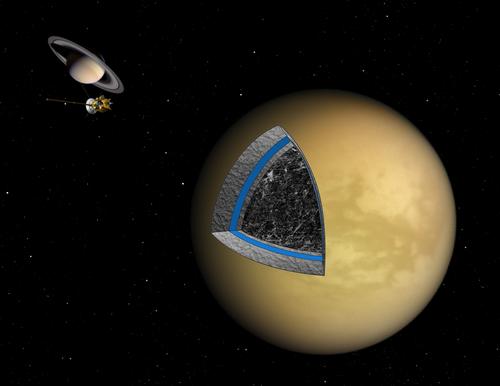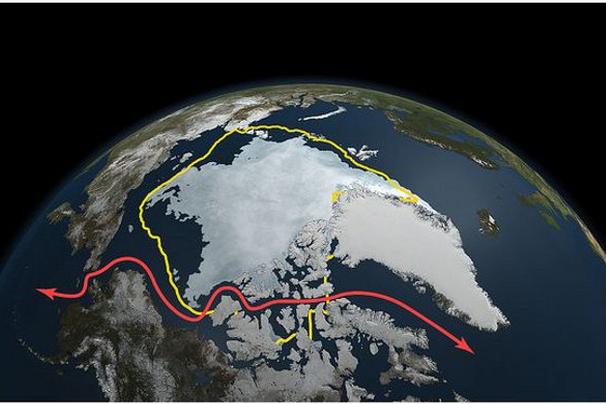Titan, which is larger than Mercury, is the only world besides Earth known to have liquid on its surface. Its seas, made of liquid methane instead of water, have often led to speculation as to whether or not they could host life. In addition to its seas on its surface, scientists recently also discovered hints that Titan possesses an internal ocean, one of water and ammonia.

This artist’s illustration shows the likely interior structure of Saturn’s moon Titan.
The cool and sluggish interior failed to separate into completely differentiated layers of ice and rock. In addition to the hazy surface of Titan (yellow), the layers in the cutaway show an ice layer starting near the surface (light gray), an internal ocean (blue), another layer of ice (light gray) and the mix of rock and ice in the interior (dark gray). In the background are the Cassini spacecraft and Saturn, not to scale. Credit: NASA/JPL
Using radar to peer through Titan’s dense atmosphere, NASA’s Cassini spacecraft found that over time, a number of prominent surface features had shifted from their expected positions by up to 19 miles (30 kilometers), showing that the crust was moving and suggesting that it rested on liquid. Now Cassini’s gravity and radar observations of Titan have discovered more clues that it might have an underground sea. Read more












